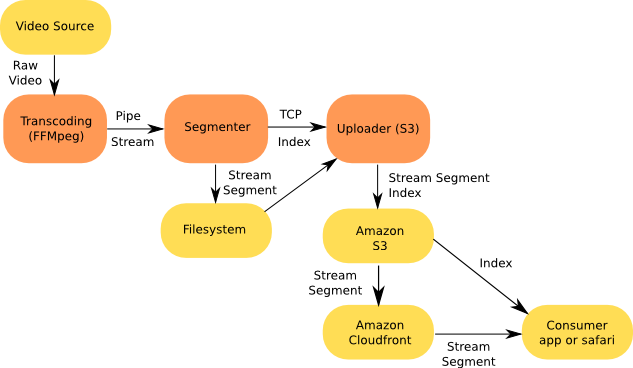I’ve updated the configuration examples in the open source segmenter project to reflect Apple’s recommended stream bitrates for iPad video streaming, added a few fixes and a few new features. If you are interested in streaming video on the iPad, iPhone or iPod Touch and haven’t done so yet you it may help to start with my post on windowed streaming on for the iPhone, then read about iPhone HTTP streaming with FFMpeg and the open source segmenter and finally check out the iPad, iPhone, and iPod Touch live video streaming project page.
Here is a demo of the iPad streaming video created with the segmenter (I tried to show the progressive upgrade happening but it happens very quickly since the iPad is on WIFI, I also show that you can scrub without any issues and if you look in the background you can see the server log displaying entries as the segments are downloaded):
If you want to view the demo yourself I’ve created a demo for the iPad, iPhone, and iPod Touch. Note that those are two links, one for the iPad version and one for the iPhone/iPod Touch version. The main difference is the size of the video.
I used the open source video Big Buck Bunny (the 1920×1080 ogg version) for the above demos.
If you are interested in more details on what changed read on or skip to the bottom if you want to see what I’ll be working towards in future versions of the segmenter.
